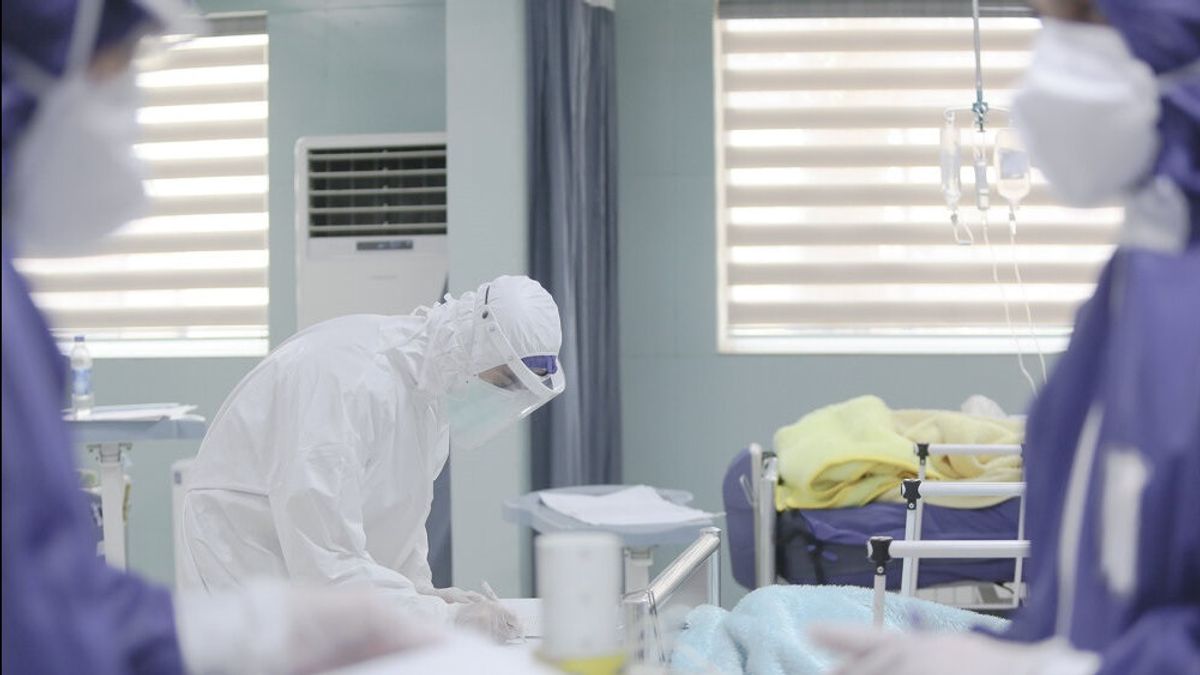JAKARTA - A doctor named Terrence Hui was observing the lungs of sufferers of COVID-19, using x-rays or x-rays. As a result, he found a "distinctive" sign, namely the presence of a white shadow on the observation of the lungs of sufferers of COVID-19.
Launching Channel News Asia, Monday, August 10, this white shadow is cloudiness in the lungs that leads to lower respiratory tract infections. This infection could mean the patient has COVID-19.
"When (the corona virus that causes COVID-19) attacks the lungs, what happens is the cells and fluid fill these air pockets," said Terrence Hui, a senior resident at the Tan Tock Seng Hospital, Singapore.
"Because they are filled, the lungs cannot exchange carbon dioxide for oxygen. And because it fails to function or fulfill its purpose. When we take the x-ray, all these fluids and cells appear as a white shadow, "explains Hui.
For the vast majority of COVID-19 patients, the x-rays show only very small white patches, Hui said. "That's why a lot of patients are asymptomatic, they're not really tight or anything. Because air will only enter the other functional parts of the lungs, ”he explained.
"But in a small group of patients, the opacity starts to increase, which means more parts of the lung are involved. That means the lungs will be decompensated because they can't function properly, "said Hui.
Research has shown that chest X-rays of patients with severe COVID-19 can develop cloudiness that can cover more than 50 percent of the lungs, Doctor Hui said. Cloudiness in the lungs is not specific for COVID-19 and can be further monitored by examining other viruses and bacteria. The final diagnosis of whether a patient has COVID-19 will come from a swab test.
“Being able to differentiate from most serious to mild is actually very useful, because it helps you set priorities. So you are using the hospital's resources to treat the sicker patients, "explains Hui.
Chest x-rays are also used to monitor the progress of COVID-19 patients who are hospitalized, Hui said. On average, COVID-19 patients undergo three x-rays during their stay at Tan Tock Seng Hospital. It can compare the x-rays a patient takes over several days to see how the individual is coping with the disease.
Risk of transmissionA trained radiographer, Reddy, has worked in the hospital for over 25 years. He has experience dealing with outbreaks, namely SARS and H1N1.
“The scale of the COVID-19 pandemic has surpassed SARS, H1N1, and Ebola. It is much bigger and the duration is also longer, ”said Reddy.
It takes a few minutes for the radiographer to perform an x-ray and it will be uploaded electronically to the server. A radiologist will have access to digital x-rays and a clinical diagnosis will be made within 30 minutes to an hour.
“Now with online technology, we don't have to touch x-ray films. We have fewer touch points, "said Reddy.
When radiographers come into contact with suspected and confirmed COVID-19 patients when they do X-rays, there is also a need for additional precautions. "The risk is real because they will come into direct contact with patients, but we are wearing complete PPE, so we are well protected," he said.
The English, Chinese, Japanese, Arabic, and French versions are automatically generated by the AI. So there may still be inaccuracies in translating, please always see Indonesian as our main language. (system supported by DigitalSiber.id)











